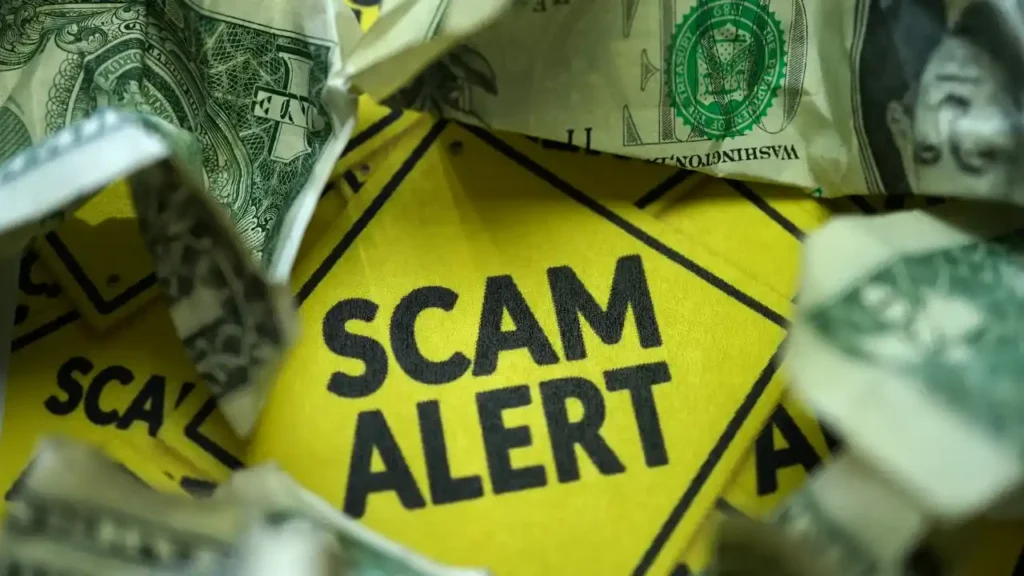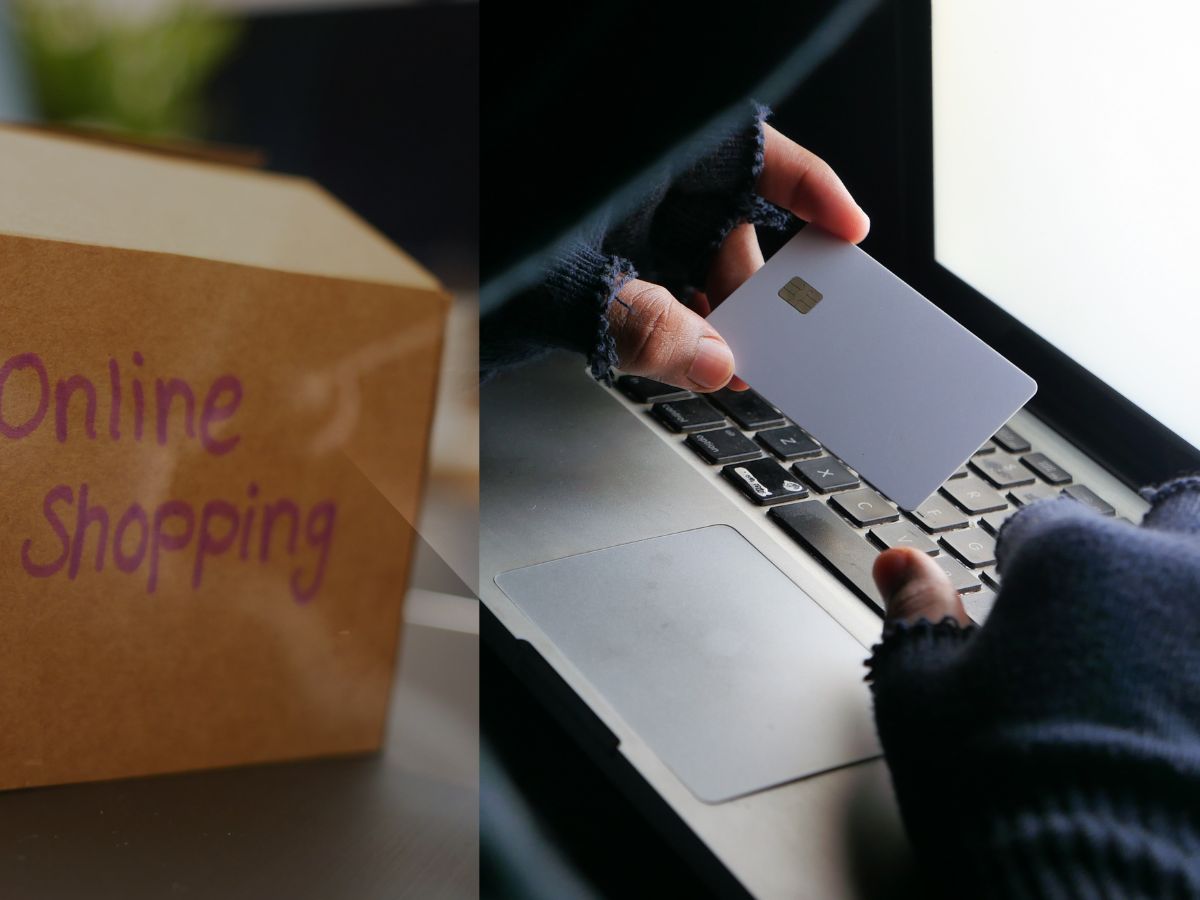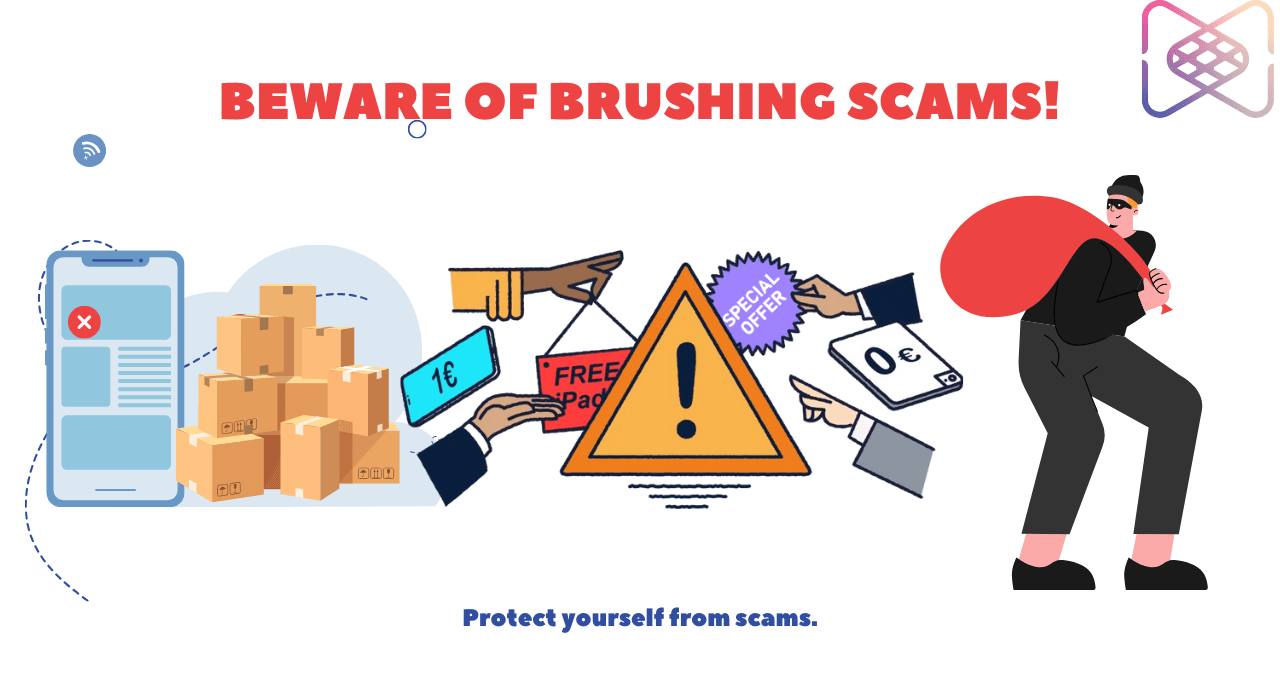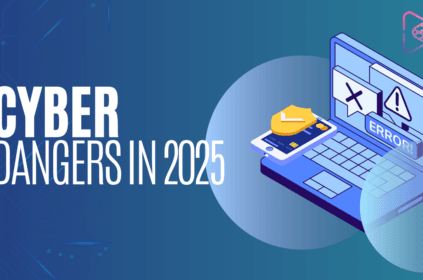“If you are not paying for the product, you are the product.” — Andrew Lewis
What is a Brushing Scam?
Have you ever received a package you didn’t order? Maybe it contained a random household item, a cheap piece of jewelry, or even a gadget. At first, you might feel lucky—a free gift! But don’t be fooled. You might be the target of a brushing scam, a deceptive tactic used by online sellers and scammers to manipulate e-commerce rankings and even steal your personal data.
At its simplest, a brushing scam involves a seller sending unsolicited products to unsuspecting people. The goal? To create fake “verified purchase” reviews on platforms like Amazon, eBay, or Walmart. In some cases, these packages come with a QR code, which can be far more dangerous than it seems. (Learn more about evolving cyber threats and how to tackle them here.)
Let’s break down how this scam works, how it can harm you, and what you can do to stay safe.

How Does a Brushing Scam Work?
The mechanics of a brushing scam are simple but effective:
- Scammers obtain real names and addresses (often from data breaches or leaked information).
- They send out packages to random people without their consent.
- They then use those deliveries to create fake reviews on e-commerce platforms, making their products seem more popular and credible.
- Sometimes, the package may include a QR code, luring recipients into an even bigger scam.
At first glance, brushing scams might seem harmless, but they raise serious privacy concerns and can put you at risk of cyber threats.
How Can a Brushing Scam Harm You?
1. Your Personal Data is at Risk
Receiving an unsolicited package means someone has your personal information. This data could have been leaked in a breach or scraped from online sources. If scammers have your address, what else do they know about you?
2. The Hidden Danger of QR Codes
Some brushing scams now include QR codes, and that’s where things get even riskier. Scanning these codes could:
- Lead you to phishing websites that steal your personal details.
- Install malware on your phone or computer.
- Trick you into making payments for fake offers.
- Give scammers access to your device, making you vulnerable to hacking.
3. Financial and Identity Fraud
In some cases, scammers may sign you up for subscriptions or fraudulent transactions using your information. They could also sell your details on the dark web, making you a target for further scams.
4. Your Reputation Could Be at Stake
Imagine someone uses your name to post fake reviews or engage in shady transactions. Your online presence could be manipulated without your knowledge, damaging your credibility.
5. Your Business Could Be Affected
If you run an online business, brushing scams can hurt your reputation. Competitors using fake reviews can push your products down in search rankings, affecting your sales and trustworthiness.
6. Legal and Compliance Issues
For businesses, brushing scams could create legal problems. If your company is falsely associated with fake reviews or fraudulent sales, you might face regulatory scrutiny or legal action.
7. Exposure to Future Scams
Once you’ve received a brushing scam package, you may be flagged as an “active” recipient, making you a target for future scams. Scammers often trade lists of responsive victims, exposing you to phishing emails, fake calls, and even more dangerous schemes.
8. Psychological Manipulation
Scammers rely on curiosity, gratitude, or confusion to manipulate victims. You might feel compelled to return the favor, leave a review, or even engage with the sender, unintentionally encouraging further fraudulent activity.
As cyber threats evolve, staying updated on the latest trends is crucial. Read about emerging cybersecurity challenges in 2025: Cybersecurity Trends 2025.

How to Protect Yourself from a Brushing Scam
Brushing scams rely on unsuspecting victims staying silent or uninformed. Here’s what you can do:
1. Don’t Engage
If you receive an unexpected package, don’t scan QR codes, don’t visit unknown websites, and don’t enter personal details. Simply discard the item.
2. Report the Incident
- To the e-commerce platform: If the package came from Amazon, eBay, or another platform, report it as fraud.
- To local authorities: If you suspect identity theft, file a report.
- To the Federal Trade Commission (FTC) or consumer protection agencies: They track fraudulent activities and can investigate further.
3. Secure Your Personal Information
- Monitor your accounts: Check bank statements, emails, and online accounts for suspicious activity.
- Update passwords: Use strong, unique passwords for each account.
- Enable two-factor authentication (2FA): This adds an extra layer of security.
- Check if your data has been leaked: Use sites like Have I Been Pwned to see if your email or phone number has been exposed.
4. Educate Friends and Family
Scammers rely on ignorance. Share this information with your loved ones to prevent them from falling victim to these deceptive tactics.
5. Be Cautious with Online Shopping
- Buy only from reputable sellers with legitimate reviews.
- Be wary of too-good-to-be-true offers.
- If a deal looks sketchy, research the seller before making a purchase.
6. Monitor Your Credit Report
If you receive an unsolicited package, check your credit report for unauthorized accounts or credit inquiries. Free credit monitoring services can alert you to any suspicious activity.
7. Contact the Shipping Carrier
Sometimes, brushing scams use real tracking numbers. Contact the carrier (UPS, FedEx, USPS, etc.) to see if they can provide information about the sender.
8. Consider Freezing Your Credit
If you suspect your information has been stolen, freezing your credit can prevent scammers from opening new accounts in your name. You can freeze and unfreeze your credit for free through major credit bureaus like Equifax, Experian, and TransUnion.

Final Thoughts: Stay Aware, Stay Safe
Brushing scams might seem like an odd inconvenience, but they signal a bigger problem: the misuse of personal data and fraudulent activities online. Whether it’s a free package with fake reviews or a malicious QR code aiming to steal your information, the risks are real.
The best defense is awareness and proactive security measures. Be vigilant about the packages you receive, scrutinize online deals, and protect your personal information at all costs. If something feels off, trust your instincts and investigate before engaging.
Understanding how these scams work is the first step toward safeguarding yourself and your data. Share this knowledge with friends and family so they, too, can recognize the warning signs. Stay alert, stay informed, and don’t fall for the bait!


















